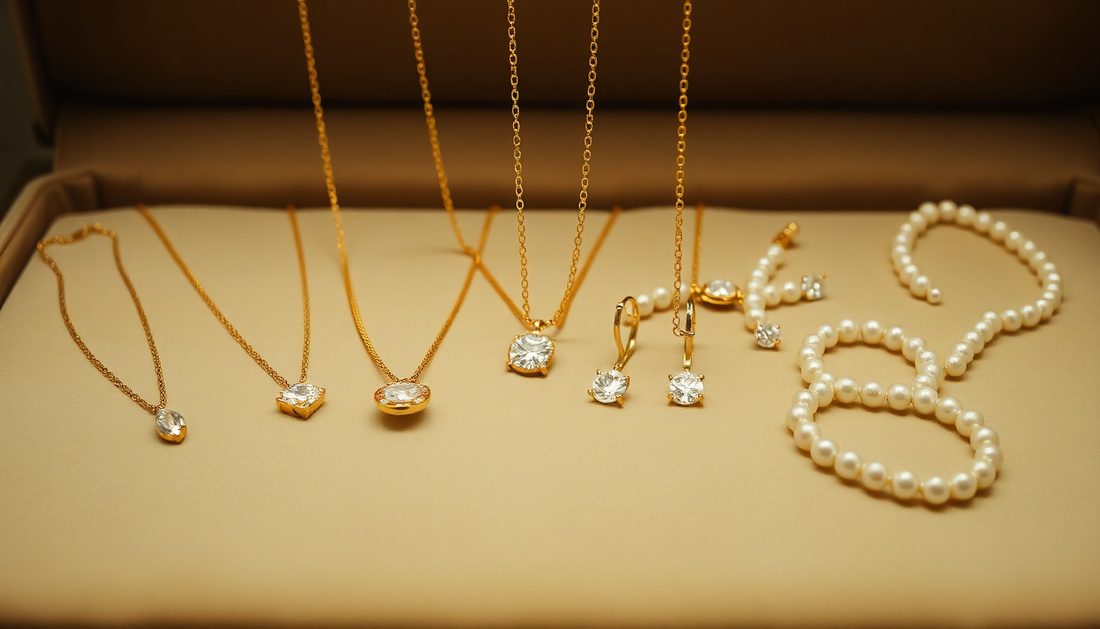
The Captivating History of Jewelry: From Ancient Treasures to Modern Trends
Share
Jewelry has been a captivating part of human history, adorning the bodies and enhancing the beauty of people across cultures and civilizations. From the ancient Egyptians' intricate gold and gemstone creations to the modern-day fashion statements, the evolution of jewelry has been a fascinating journey. In this blog post, we'll explore the rich history of jewelry, delving into its origins, significance, and the ever-changing trends that have shaped this timeless art form.
The Allure of Ancient Jewelry
The earliest known jewelry dates back to prehistoric times, with archaeologists uncovering stunning examples of necklaces, bracelets, and other adornments crafted from materials such as shells, bones, and teeth. These simple yet captivating pieces were not only decorative but also held symbolic and spiritual meaning for the wearers.
As civilizations advanced, the art of jewelry-making flourished. The ancient Egyptians, renowned for their opulent and intricate designs, created masterpieces that showcased their technical prowess and cultural beliefs. Pharaohs and nobles adorned themselves with elaborate collars, headdresses, and amulets, often incorporating symbols of power, fertility, and protection.
The ancient Greeks and Romans also left an indelible mark on the world of jewelry. Their creations ranged from delicate filigree work to bold, statement pieces that reflected the grandeur of their respective empires. These ancient civilizations not only mastered the art of metalsmithing but also incorporated precious stones, such as emeralds, rubies, and sapphires, into their designs.
The Significance of Jewelry in Ancient Cultures
Jewelry held deep significance in ancient cultures, serving as more than just a decorative accessory. In many societies, specific pieces were associated with social status, religious beliefs, and even magical powers. For instance, the ancient Egyptians believed that certain gemstones, like lapis lazuli and turquoise, possessed healing properties and could ward off evil spirits.
Similarly, the ancient Greeks and Romans used jewelry to communicate social and political status. Elaborate necklaces, rings, and brooches were often reserved for the elite, while simpler pieces were worn by the common people. These adornments not only showcased the wearer's wealth and power but also served as a means of self-expression and personal identity.
The Evolution of Jewelry Trends
As civilizations evolved, so too did the styles and materials used in jewelry-making. The Middle Ages saw a shift towards more religious-inspired designs, with crosses, saints, and other Christian symbols becoming popular motifs. The Renaissance period, on the other hand, ushered in a renewed interest in classical themes and a focus on intricate, naturalistic designs.
The 18th and 19th centuries brought about significant changes in the world of jewelry. The Industrial Revolution paved the way for mass production, making jewelry more accessible to the general public. This era also saw the rise of the "Grand Tour," where wealthy Europeans traveled to Italy and Greece, bringing back ancient-inspired designs that influenced the jewelry trends of the time.
The 20th century witnessed a kaleidoscope of jewelry styles, from the Art Nouveau's organic, flowing forms to the Art Deco's geometric and streamlined elegance. The mid-20th century saw the emergence of bold, statement pieces that reflected the vibrant and rebellious spirit of the times, while the late 20th and early 21st centuries have seen a resurgence of vintage-inspired and minimalist designs.
The Enduring Allure of Jewelry
Throughout history, jewelry has remained a constant in human civilization, serving as a means of self-expression, cultural identity, and personal adornment. From the ancient Egyptians' intricate gold and gemstone creations to the modern-day fashion statements, the evolution of jewelry has been a captivating journey.
Today, the world of jewelry continues to evolve, with designers and artisans pushing the boundaries of creativity and innovation. Whether it's the timeless elegance of a diamond solitaire or the bold, contemporary designs of today, jewelry remains a powerful symbol of beauty, status, and personal identity.
As we delve deeper into the rich history of jewelry, we can't help but be mesmerized by the stories and cultural significance that each piece holds. From the ancient treasures that have stood the test of time to the ever-changing trends that captivate our modern sensibilities, the history of jewelry is a testament to the enduring human desire to adorn, express, and celebrate our unique identities.
Conclusion
The history of jewelry is a captivating tale that spans millennia, reflecting the evolution of human civilization and the enduring human desire for self-expression and personal adornment. From the ancient Egyptians' opulent creations to the modern-day fashion statements, the journey of jewelry has been a fascinating one, filled with cultural significance, technical innovation, and timeless beauty.
As we continue to explore and appreciate the rich history of jewelry, we can't help but be inspired by the stories and symbolism that each piece holds. Whether you're a collector, a jewelry enthusiast, or simply someone who appreciates the art of adornment, the history of jewelry is a testament to the enduring power of this timeless art form.







